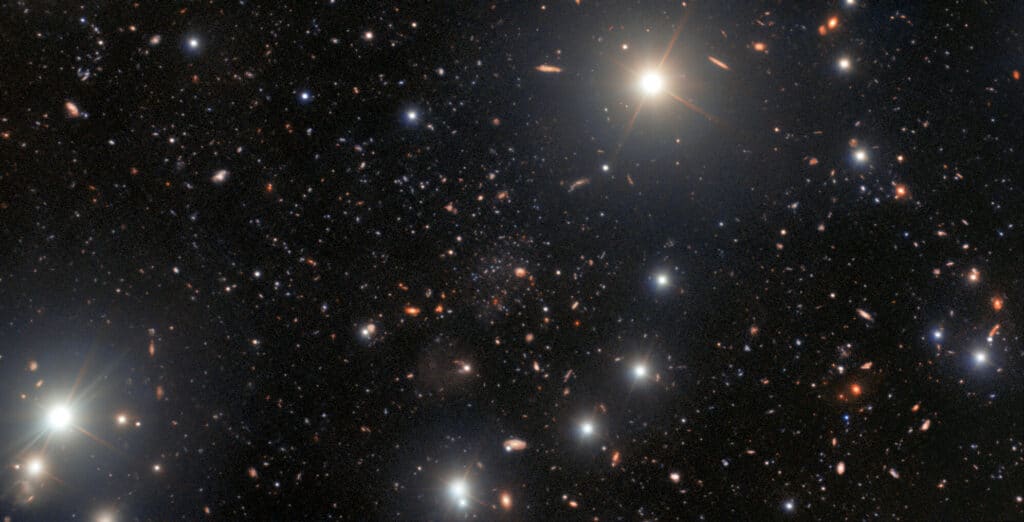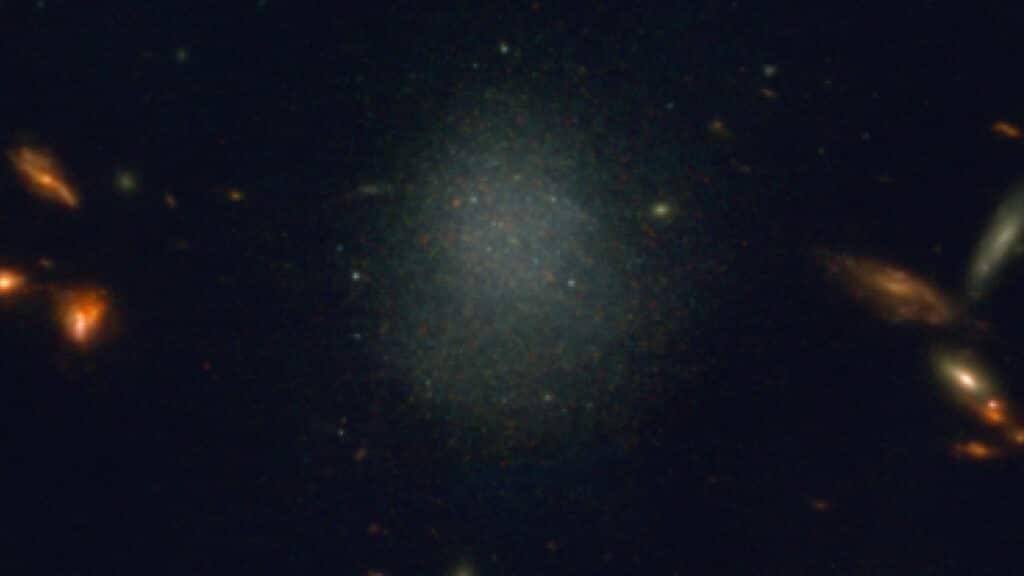That shouldn’t be there! Arizona State University astronomers have uncovered a dwarf galaxy that challenges existing theories on galaxy evolution. This discovery was made using the James Webb Space Telescope (JWST), despite the galaxy not being the primary focus of their observations. The findings introduce a new perspective on the characteristics and formation of dwarf galaxies, which are smaller and less luminous than galaxies like our Milky Way.
Dwarf galaxies, typically home to fewer than 100 million stars, are the most numerous in the universe. However, PEARLSDG, the dwarf galaxy found in the JWST imaging, exhibits unique properties that set it apart from traditional expectations. Unlike most dwarf galaxies, which are either forming new stars or interacting with nearby galaxies, PEARLSDG is quiescent—meaning it is not actively forming new stars—and remains isolated.

“These types of isolated quiescent dwarf galaxies haven’t really been seen before except for relatively few cases. They are not really expected to exist given our current understanding of galaxy evolution, so the fact that we see this object helps us improve our theories for galaxy formation,” says study lead author Tim Carleton, assistant research scientist at Arizona State University, in a media release. “Generally, dwarf galaxies that are out there by themselves are continuing to form new stars.”
This unexpected find was part of the JWST Prime Extragalactic Areas for Reionization and Lensing Science (PEARLS) project, aimed at studying a cluster of galaxies. PEARLSDG was discovered serendipitously in an area not intended for primary observation. The ability to observe individual stars within this galaxy, a feat made possible by the high angular resolution and sensitivity of JWST’s Near-InfraRed Camera (NIRCam), was particularly noteworthy. These stars, brighter in JWST wavelengths, enabled the astronomers to measure the galaxy’s distance at 98 million light-years, marking it as one of the farthest galaxies from which individual stars can be observed in such detail.
Astronomers utilized a comprehensive set of data, including imaging from JWST’s NIRCam, spectroscopic data from the DeVeny Optical Spectrograph, and archival imaging from various space telescopes and ground-based surveys. This multi-faceted approach allowed them to conclude that PEARLSDG was indeed not forming new stars, further distinguishing it from the common dwarf galaxy profile.
The absence of young stars was determined through both the color of the galaxy, as young stars exhibit specific color signatures, and spectroscopic data which lacked features indicative of young stars. This detailed analysis confirmed PEARLSDG’s isolated and quiescent status, going against the grain of what astronomers typically expect from such galaxies.
“This was absolutely against people’s expectations for a dwarf galaxy like this,” notes Carleton, highlighting the importance of this discovery in reshaping our understanding of galaxy formation and evolution. The findings suggest the existence of more isolated quiescent galaxies in the universe, awaiting identification through the advanced capabilities of JWST.
The study is published in The Astrophysical Journal Letters and was presented at January’s 243 AAS press conference: Oddities in the Sky.














Comments